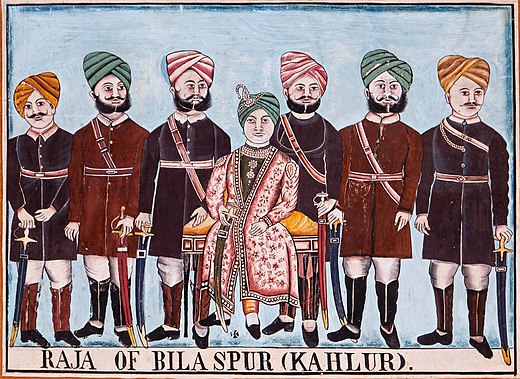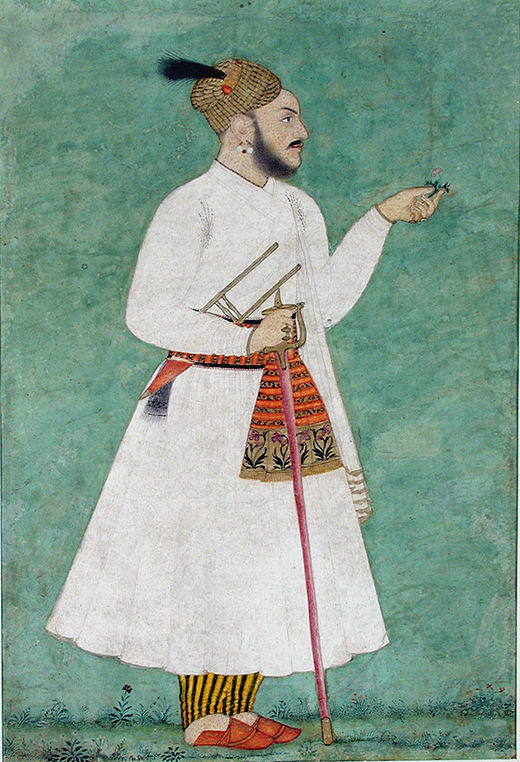
Kangra-Lambagraon was a historical princely estate (jagir) of British India located in the present-day state of Himachal Pradesh. In 1947, the estate comprised 437 villages, encompassing an area of 324 km2. It had with a Privy Purse of Rs 70,000/- and enjoyed a revenue of approx. Rs.1,76,000/-.

Bilaspur is a town and a municipal council in Bilaspur district in the state of Himachal Pradesh, India.

Bilaspur is a district of Himachal Pradesh, India. Its headquarters are in the town of Bilaspur. The district has an area of 1,167 km2, and a population of 381,956. As of 2011 it is the third least populous district of Himachal Pradesh, after Lahul and Spiti and Kinnaur.
The Hill States of India were princely states lying in the northern border regions of the British Indian Empire.

The Punjab States Agency was a political office of the British Indian Empire. The agency was created in the 1930s, on the model of the Central India Agency and Rajputana Agency, and dealt with forty princely states in northwest India formerly dealt with by the British province of the Punjab.

Chenani is a town and tehsil in the Udhampur district, in the Indian union territory of Jammu and Kashmir. It is governed by a Notified Area Council. Prior to 1947, it was an internal jagir ruled by a tributary ruler in the princely state of Jammu and Kashmir.
Himachal Pradesh is located in north India and became 18th state of India.
The hill states in India also participated in the freedom struggle (1914–1947) against the British colonial rule.
Kahlur Fort is situated in erstwhile princely state of Kahlur in Himachal Pradesh.

Dhami was a Princely State situated 26 kilometres (16 mi) west of Shimla, India. Its capital was Halog and the state formed a part of the region known as the Punjab Hill States Agency during the British Raj period. In 1941 it had an area of 73 square kilometres (28 sq mi) and a population of 5,114 people. In 1948 Dhami was made a part of Himachal Pradesh.

Sirmur was an independent kingdom in India, founded in 1616, located in the region that is now the Sirmaur district of Himachal Pradesh. The state was also known as Nahan, after its main city, Nahan. The state ranked predominant amongst the Punjab hill States. It had an area of 4,039 km2 and a revenue of 300,000 rupees in 1891.
Mehlog or Mah(i)log was a princely state of India before and during the colonial British Raj. In 1940 it had a population of 8,631 and an area of 49 square miles (130 km2). The capital city was Patta.

Bilaspur State was a state within the Union of India from 1950 to 1956 with Bilaspur town as its capital. The state was established after the province of the same name created in 1948.
The Sunhak are a Muslim community found in the state of Himachal Pradesh in India. They are Muslim converts from the Chandel Rajputs of Kahlur. According to their traditions, their ancestor, a Chandel Rajput married a Muslim woman, and as such he was disowned by other members of his tribe. His descendants now number a few hundred families found in the villages of Chunjhani and Salahon in Bilaspur District. They are to have acquired the name Sunhak for from the Pahari word for hawk, as the community were employed as hawk handlers by the Rajahs of Kahlur.

Mandi State was a native state of British India, within the Punjab; with Mandi, Himachal Pradesh as its capital. The state of Mandi, which included two towns and 3,625 villages, was part of the States of the Punjab Hills. It was located in the Himalayan range, bordering to the west, north, and east on the British Punjabi district of Kangra; to the south, on Suket; and to the southwest, on Bilaspur. As of 1941, population of Mandi State was 232,598 and area of the state was 1,139 square kilometres (440 sq mi).
Bhim or Bhima is one of the central characters from the Hindu epic Mahabharata.
Chandel or Chandela is a Rajput clan from India. Families belonging to this clan ruled several kingdoms in north India and held various feudal estates. The most notable of these were the Chandelas of Jejakabhukti, who ruled the Bundelkhand region.

Sunhani is a village located in Jhanduta tehsil of Bilaspur, Himachal Pradesh, India. At the 2001 Census of India, it had a population of 2134 people and 452 families. It was the capital of the Kahlur kingdom from 1600-1650. Throughout history it has played an important role in the local area.
Raja Sir Anand Chand was the 44th Raja of Bilaspur. He was a Member of Parliament, representing Bihar in the Rajya Sabha the upper house of India's Parliament as a member of the Indian National Congress.













